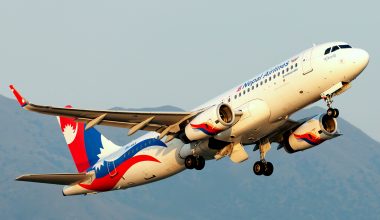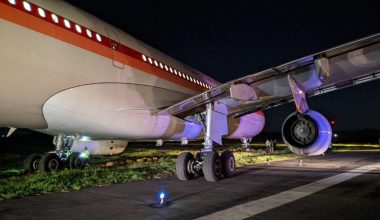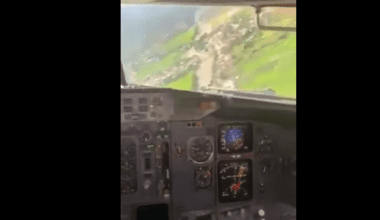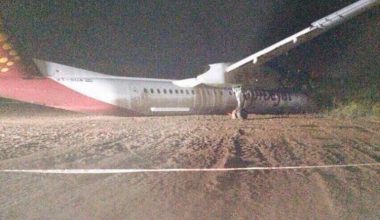The US media reports suggest that the China Eastern Boeing 737-800, which crashed in a heavily-forested area in Guangxi, had taken an intentional nosedive, as indicated by flight data recovered from the black box.
China Eastern Airlines flight MU5735 was carrying 132 people and flying from Kunming to Guangzhou when it lost its height rapidly from its cruising altitude and slammed into a hillside in a fiery explosion. There were no survivors, and most parts of the Boeing 737-800 jet were disintegrated. However, the search crew found black boxes with damaged cockpit voice recorders, which were sent to the United States for analysis of the information.

Intentional nosedive
On May 17, The Wall Street Journal reported that the flight data recorders recovered from the crash site signaled the intentional act behind the B737 crash, whereby someone in the cockpit input orders to push the plane into a near-vertical dive. Citing a person well-known about accident’s preliminary assessment by American officials, Journal reported that the aircraft went into a nosedive as told by someone at the controls. The person also informed that Chinese investigators hadn’t flagged any in-flight malfunctions on crashed Boeing 737-800 aircraft-the workhorse of the global aviation industry reputed for best safety records.
The crash is believed to have been caused by the deliberate input from the cockpit as the preliminary investigation couldn’t find any mechanical or technical faults with the jet.
Someone in the cockpit-who?
With no proof of technical malfunction with the aircraft in the preliminary assessment, the experts on the US National Transportation Safety Board (NTSB) have focused on the action of the flight crew as well as their background. As per China Eastern Airlines, all three pilots on board had sound health and family conditions without any indication of financial trouble. Although the information gathered so far has shifted American officials’ attention towards the personal lives and background of a pilot, it is also possible that the passenger or someone who had forced their way into the cockpit might have input orders deliberately to the controls to flow aircraft into the mountainside below.
The affected airline told Journal that the cockpit intrusion wasn’t likely, as the pilot didn’t give any emergency code or respond to the repeated calls from air traffic controllers and nearby planes before the crash.
Follow-up
According to the airline’s statement, China Eastern Airlines isn’t responsible for the Boeing 737 crash investigation, which is led by the China Aviation Administration of China (CAAC), but the US officials are involved as the aircraft was damaged in the accident is US-made. The previous month, CAAC said that the reports regarding the intentional crash had led to grave public misleading and interference with the crash investigation.
The Chinese state media informed that authorities involved in the accident investigation were still assessing recordings from the cockpit and jet wreckage. It also reported that CAAC would perform the investigation scientifically, rigorously, and orderly.
On May 10, the NTSB Chair Jennifer Homendy told Reuters that there was no indication of safety issues regarding urgent actions and, as such, NTSB would issue urgent safety recommendations. The US planemaker Boeing hasn’t flagged any mechanical issues with no evidence of ‘anything abnormal’ by CAAC investigators. To the Wall Street Journal’s report, Boeing has refused to comment, complying with ICAO rules which allow only investigating agencies to comment on an open-air accident investigation.
The US National Transportation Board has issued a statement saying CAAC will provide all information and issue updates on its investigation of the China Eastern 5725 crash. NTSB won’t comment on the CAAC’s investigation, and it’s up to CAAC when and whether it issues updates.
MU 5725 crash
On March 21, a Boeing 737-800 jetliner en route from Kunming to Guangzhou plunged from 29000 ft to 8000 ft, leveled off, and then went into a freefall in Guangxi province, crashing into a forested hillside and catching fire. Following China’s deadliest aviation crash in 28 years, China Eastern grounded the entire fleet of Boeing 737-800 for about a month as a precaution.
In recent decades, mainland China has seen vast improvements in-flight safety and aviation standards, with the country’s last major plane accident reported in August 2010.
Boeing 737-800
Boeing 737-800 aircraft is a stretched version of 737-700, preceding the Boeing 737 Max model, the newest variant of the 737 families. Known for its exceptional safety record and efficiency, it is the widely used narrow-body aircraft with more than 5000 units delivered so far.






